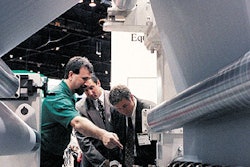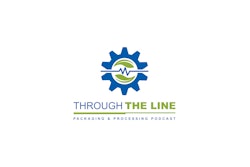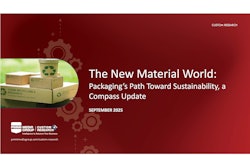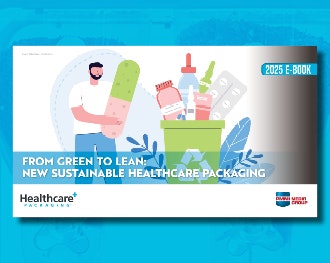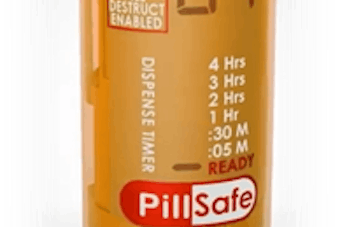Providing suppliers with a well-written user requirement specification (URS) is essential for developing new machinery or packaging lines. A poorly written URS can result in miscommunication between the end user and the machine builder, which in turn can lead to time wasted rewriting documentation.
"The URS should define, clearly and precisely, what the user wants the equipment to do in terms of performance characteristics, product quality metrics, and production yields," says Dave Whittenton, business development manager at Rockwell Automation. "It should also define any nonfunctional requirements, constraints, and deliverables that need to be supplied with the system."
Whittenton and Pete Oberst, project engineering manager for Remmele, offer tips on how to improve the URS process:
DOs
• Interview all stakeholders. Who is going to use the equipment? Who is going to maintain the equipment? Who is going to be responsible for the product? Each of these people has an interest in how the equipment is operated. Their needs should be included in the URS.
• Work with the validation group to establish a validation plan. The time to plan for validation is at the beginning when you're writing the URS, rather than at the end when the equipment hits the floor. If you wait until the end, you're putting the cart before the horse. This can lead to a compromised plan or the need to retest or requalify equipment.
• Include a good overview. This section should describe the machine and what it's supposed to do. It should also include background information, such as similar machines and processes currently being used.
• Pay attention to word choice. Words like "shall" and "will" typically define requirements. Words like "may" and "ought" define goals that are desired but not necessarily required. Make sure your word choice clearly differentiates requirements from desired outcomes.
• Include supporting documentation. If a standard or other specification is referred to, it should be included as an attachment.
DON'Ts
• Don't use time-based metrics. Today, performance metrics are almost always written as a time-dependent measurement. For example, "100 products per minute." This approach is too vague and does not take into account product yield and quality.
• Don't use broad, sweeping statements. For example, "must be 21 CFR Part 11 compliant." Be specific about the elements within the compliance. What part of 21 CFR Part 11 needs to be compliant? Which records do you need to comply with?
• Don't cover functional requirement specifications (FRS) in the URS. The overall intention of the URS is to describe what the equipment is supposed to do. How it performs is not a function of the URS.
• Don't place multiple requirements in a single section. This makes it hard to test and validate each independent requirement. Each requirement should be numbered and stand on its own.
• Don't duplicate requirements in multiple sections. You don't want the same requirements repeated in five different sections of the document. This causes unnecessary work. Rather, collect the requirements in a general section and test them once.
Need help preparing a URS?
Additional guidance may be found in the International Society for Pharmaceutical Engineering's (ISPE) Good Automated Manufacturing Practice (GAMP)Guide for Validation of Automated Systems. The JETT (Joint Equipment Transition Team) Consortium, a special interest group of ISPE, has developed documents and templates to help facilitate the URS process.
--By Kassandra Kania
Kassandra Kania is a freelance writer based in Charlotte, NC. She has covered healthcare packaging for several years, most recently as a trade publication editor.
"The URS should define, clearly and precisely, what the user wants the equipment to do in terms of performance characteristics, product quality metrics, and production yields," says Dave Whittenton, business development manager at Rockwell Automation. "It should also define any nonfunctional requirements, constraints, and deliverables that need to be supplied with the system."
Whittenton and Pete Oberst, project engineering manager for Remmele, offer tips on how to improve the URS process:
DOs
• Interview all stakeholders. Who is going to use the equipment? Who is going to maintain the equipment? Who is going to be responsible for the product? Each of these people has an interest in how the equipment is operated. Their needs should be included in the URS.
• Work with the validation group to establish a validation plan. The time to plan for validation is at the beginning when you're writing the URS, rather than at the end when the equipment hits the floor. If you wait until the end, you're putting the cart before the horse. This can lead to a compromised plan or the need to retest or requalify equipment.
• Include a good overview. This section should describe the machine and what it's supposed to do. It should also include background information, such as similar machines and processes currently being used.
• Pay attention to word choice. Words like "shall" and "will" typically define requirements. Words like "may" and "ought" define goals that are desired but not necessarily required. Make sure your word choice clearly differentiates requirements from desired outcomes.
• Include supporting documentation. If a standard or other specification is referred to, it should be included as an attachment.
DON'Ts
• Don't use time-based metrics. Today, performance metrics are almost always written as a time-dependent measurement. For example, "100 products per minute." This approach is too vague and does not take into account product yield and quality.
• Don't use broad, sweeping statements. For example, "must be 21 CFR Part 11 compliant." Be specific about the elements within the compliance. What part of 21 CFR Part 11 needs to be compliant? Which records do you need to comply with?
• Don't cover functional requirement specifications (FRS) in the URS. The overall intention of the URS is to describe what the equipment is supposed to do. How it performs is not a function of the URS.
• Don't place multiple requirements in a single section. This makes it hard to test and validate each independent requirement. Each requirement should be numbered and stand on its own.
• Don't duplicate requirements in multiple sections. You don't want the same requirements repeated in five different sections of the document. This causes unnecessary work. Rather, collect the requirements in a general section and test them once.
Need help preparing a URS?
Additional guidance may be found in the International Society for Pharmaceutical Engineering's (ISPE) Good Automated Manufacturing Practice (GAMP)Guide for Validation of Automated Systems. The JETT (Joint Equipment Transition Team) Consortium, a special interest group of ISPE, has developed documents and templates to help facilitate the URS process.
--By Kassandra Kania
Kassandra Kania is a freelance writer based in Charlotte, NC. She has covered healthcare packaging for several years, most recently as a trade publication editor.



